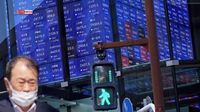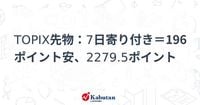On April 7, 2025, the Osaka Exchange activated a circuit breaker at 8:45 AM, temporarily halting trading of the Nikkei average futures and TOPIX futures due to significant selling pressure that pushed prices to their limit-down levels. This decision was made to prevent panic in the markets as fears of a global trade war escalated, following alarming developments in international trade policies.
Trading resumed sequentially from 8:55 AM, but the damage was already done. The Nikkei 225 index plunged by 7.35% in early trading, following a 2.75% drop the previous Friday. This was part of a broader trend that saw the TOPIX index also experiencing severe declines. Other markets were not spared either; trading for TOPIX Growth Market 250 Index futures, JPX Nikkei 400 futures, and NY Dow futures was similarly suspended.
The circuit breaker mechanism is an automatic market safety feature designed to temporarily halt trading during extreme market volatility. The Japan Exchange Group (JPX), which operates both the Tokyo Stock Exchange and the Osaka Exchange, implemented this measure to allow traders time to digest market information and prevent irrational sell-offs. This move came as global markets were already in freefall, largely triggered by U.S. President Donald Trump’s recent tariff announcements.
Trump's controversial “Liberation Day” tariffs, which imposed a 10% baseline duty on all imports along with additional reciprocal tariffs, sent shockwaves through Wall Street and Asian markets, igniting fears of a potential global trade war. On Friday, the Dow Jones Industrial Average suffered a staggering loss of 2,231 points, marking its worst single-day performance since the pandemic began. Analysts noted that this marked two consecutive days of significant losses, a first in market history.
As the situation escalated, the Dow Jones and S&P 500 futures dropped over 4% overnight, prompting fears that April 7 could be remembered as the next “Black Monday,” reminiscent of the 1987 market crash. The Nikkei 225’s drop to an 18-month low added to the anxiety, with South Korea’s Kospi index dropping by 4.8% on the same day.
Market analyst Jim Cramer warned of a potential repeat of the catastrophic events of 1987, stating, “If the President doesn’t extend an olive branch or create incentive structures for fair-trading nations, we might be looking at a repeat of history.” With the global markets teetering on the edge, traders and investors were left wondering how central banks and governments would respond to this turmoil.
In Asia-Pacific markets, the sell-off extended beyond Japan. Hong Kong’s Hang Seng Index saw a dramatic decline of 10.21%, while the mainland's CSI 300 fell by 5.41%. The broader Topix index in Japan plummeted by 9.6%, with notable losses among major companies. The declines were widespread, affecting various sectors including technology, materials, and financials.
In Australia, the S&P/ASX 200 index dropped over 6% to hit an 18-month low, reflecting similar trends across the region. The decline was attributed to fears of a global recession stemming from escalating trade tensions. U.S. oil prices also fell below $60 a barrel, a significant drop that further indicated the mounting economic pressures.
The turmoil was exacerbated by China’s retaliation against U.S. tariffs, with reports indicating that Beijing planned to impose a 34% tariff on U.S. goods. This development added to the uncertainty, as a gauge of U.S.-listed Chinese companies fell by 8.9% on Friday, signaling investor anxiety about the future of U.S.-China trade relations.
As markets braced for further declines, the yield on 5-year Japanese government bonds fell to 0.761%, while the 10-year bond yield hovered around 1.405%, reflecting a flight to safety among investors. The Japanese yen also gained against the U.S. dollar, trading at $146.32, indicating a shift in investor sentiment as they sought stability amidst the chaos.
In the wake of these developments, analysts were closely monitoring the responses from U.S., European, and Asian leaders, as well as central banks, to gauge how they would navigate the unfolding crisis. The circuit breaker in Japan may have been just the beginning, with expectations that similar measures could be triggered in other global exchanges as the situation develops.
As the day progressed, the situation remained fluid, and investors were left on edge, wondering whether April 7, 2025, would indeed mark a significant turning point in global financial markets. With the potential for further market interventions and policy adjustments, traders were advised to remain vigilant and prepared for continued volatility.







